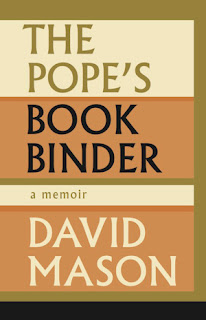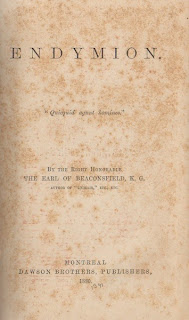My introduction to Canadian literature came in the pages of National Lampoon. No joke. Canada's writers weren't taught in the Montreal public schools I attended. The assigned reading for my Grade 10 English class featured Shane, The Pearl, Walkabout, The Chrysalids and, predictably, Lord of the Flies. Of these, my favourite was The Chrysalids, in part because it takes place in post-apocalyptic Labrador, as opposed to, say, nineteenth-century Wyoming.
So it was, just as I was preparing to shift my focus to the Australian Outback, that I bought the March 1978 issue of National Lampoon, featuring the first selection from The Bombardier Guide to Canadian Authors.
"Financed by the Bombardier Snowmobile Company," written by Ted Mann, Brian Shein and Sean Kelly, the format of the guide was simple: a brief entry, followed by a rating on a scale of zero to five skidoos.
The first to be so honoured was Margaret Atwood (one skidoo). This brief except provides a fair example of the guide's style:
She is best known for advancing the theory that America and Canada are simply states of mind, the former comparable to that of a schnapps-crazed Wehrmacht foot soldier and the latter to that of an autistic child left behind in a deserted Muskoka summer cottage playing with Molson's Ale cans, spent shell casings, and dead birds hung from the light fixture, who will one day become aware of its situation, go to college, and write novels. She is better known, among Margaret-watchers, for taking gross offense at the suggestion (in a crudely dittoed literary periodical) that she may have sparked an erection in a considerably more talented Canadian author who shall here remain nameless (see Glassco, John).That last sentence would've been my first encounter with Glassco's name. The incident described is one that demanded particular care when writing A Gentleman of Pleasure. Rosalie Abella, the lawyer Ms Atwood hired to go after the "crudely dittoed literary periodical", now sits on the Supreme Court.*
And here's Glassco again in the entry for "Callahan, Morely":
As The Bombardier Guide to Canadian Authors, The Bombardier Skiddoo [sic] Guide to Canadian Authors, and, finally, The Bombardier Skiddoo [sic] Guide to Canadian Literature, the reference work appeared sporadically throughout 1978, then returned five years later. By that time, Grade 10 was far behind me and I was at university with two of Sean Kelly's kids. A coincidence worthy of Isabel Ecclestone Mackay (not covered), I suppose; much more predictable was the presence of Frederick Philip Grove on my reading lists. The April 1983 issue, marking the return of the guide, brought this well-timed entry:
The skidoo awarded Grove may have been an act of generosity. Sensitive Canadians all, the critics never left any writer empty-handed. Farley Mowat rated two snowshoes; Mazo de la Roche received two bags of cash. There was also some playing around with the skidoos, most notably the two awarded George Jonas and Barbara Amiel, "Canada's most formidable literary spouse-and-spouse team and toast of Toronto's propeller set" (see below).
Every bit as relevant as The Oxford Companion to Canadian Literature, and at times just as funny, I've held onto my copies.
It's doing a bit of a disservice to reduce the guide to a list of ratings, but the following gives a good idea of its scope.
6½
Northrop Frye
6
Lady Flora Eaton
5
Émile Nelligan
Malcolm Lowry
Society of Jesus
4
Stephen Leacock
E.J. Pratt
Mordecai Richler
Lubor J. Zink
3
Ralph Connor
Robertson Davies
Timothy Eaton
John Herbert
Brian Moore
F.R. Scott
George Woodcock
2
John Buchan
Morley Callaghan
Bliss Carman
William Henry Drummond
The Four Horsemen
Robert Fulford
Louis Hémon
Archibald Lampman
Eli Mandel
James Reaney
Sir Charles G.D. Roberts
1½
Irving Layton
1
Margaret Atwood
Pierre Berton
Earle Birney
bill bisset
Louis Dudek
Alan Fotheringham
Hugh Garner
Oliver Goldsmith
Frederick Philip Grove
Guy F. Claude Hamel
Hugh MacLennan
Marshall McLuhan
Jay McPherson
Susanna Moodie
John Newlove
Marjorie Pickthall
Al Purdy
Duncan Campbell Scott
Scott Symons
Charles Templeton
George Bowering (one skidoo, one baseball bat)
John Buell (two skidoos, two crosses)
Leonard Cohen (two skidoos, one razor blade)
Octave Crémazie (one flag bearing a fleur de lys)
Mazo de la Roche (two bags of cash)
Thomas Chandler Haliburton (one horse-drawn skidoo)
Hugh Hood (five baseball gloves)
Pauline Johnson (one canoe)
George Jonas and Barbara Amiel (two skidoos mating)
George Jonas and Barbara Amiel (two skidoos mating)
A.M. Klein (three skidoos, three Stars of David)
John McCrae (one skidoo, one cross)
W.O. Mitchell (one skidoo, two rocking chairs)
Lucy Maud Montgomery (one skidoo, one bonnet)
Farley Mowat (two snowshoes)
Robert W. Service (one skidoo drawn by three huskies)
Joe Wallace (one skidoo, one hammer and sickle)
J. Michael Yates (one skidoo, two snakes)
Scott Young (one broken hockey stick)
* Shameless plug: Still more on the scandal is found in the brand spanking new Heart Accepts It All: Selected Letters of John Glassco, edited by yours truly.





























+.png)


















